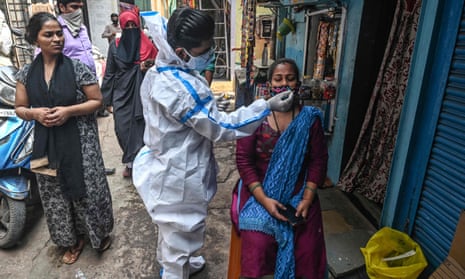From the moment public health officials started to track new variants of coronavirus, it became clear that the same mutations were cropping up time and again and making the virus more troublesome. What are these mutations, what do they do, and what do they mean for the pandemic?
What are mutations?
The genetic code of the coronavirus is held in about 30,000 letters of RNA, a molecule similar to DNA. When the virus infects human cells, the genetic code is copied to make new virus particles. But mistakes happen in the process and these copying errors become mutations in the new virus. Most mutations have little effect, while some will impair the virus and die out. But occasionally a mutation will benefit the virus, for example by making it latch on to human cells more effectively, or evade some of the immune defences the body builds after previous infection or vaccination.
When did coronavirus start to mutate?
The virus has been mutating from the start. On average, a single Sars-CoV-2 virus accumulates two single-letter mutations a month. The influenza virus mutates at about twice this rate. Many of the mutations that happened early on helped the coronavirus adapt to humans. One of the first mutations to go global is known as D614G, or Doug for short. This mutation arose early in the pandemic and by June 2020 it had spread around the world. The D614G mutation stabilises the spike proteins that enable the virus to latch on to human cells and infect them. (Variants without Doug are, naturally, called Douglas).
What other mutations are there?
New mutations emerge all the time, but scientists focus on those that have the potential to make the virus more problematic. One of the most common mutations is N501Y, known as Nelly to geneticists tracking the new variants. This mutation affects the 501st amino acid in the virus, swapping asparagine for another amino acid called tyrosine. This changes the shape of the spike protein in a way that helps the virus bind more tightly to human cells. One likely consequence is that it takes less virus to cause an infection, so the disease spreads more easily.
The mutation appears in at least three variants that are causing concern around the world: the fast-spreading B117 or 501YV1 variant first spotted in Kent; the B1351 or 501YV2 variant first found in South Africa; and the P1 or 501YV3 variant first seen in Brazil.
But “variants of concern” share other mutations, too. The B1351 and P1 variants both carry another spike mutation, K417N, the impact of which is not yet clear.
One of the most worrying mutations found so far is E484K, or Eeek. This also changes the spike protein, this time making it harder for some antibodies built up by vaccination or previous infection to latch on to the virus. Scientists fear that E484K-carrying variants could still spread in populations that have been hit hard by the virus or which have been highly vaccinated, hence the concern about the South African variant undoing the vaccination programme in the UK.
A hint that the mutation benefits the virus can be seen in the number of variants that now carry it. Geneticists have spotted E484K in the South African and Brazilian variants and others found in the UK, New York, Nigeria and most recently, Angola. In the UK, samples of the Kent variant spreading in the south-west have also evolved the E484K mutation, as has another variant circulating in Merseyside.
Why do the same mutations crop up?
The same mutations can arise by chance. But when variants around the world get a boost after acquiring several matching mutations (D614G, N501Y and E484K are all found in the South African and Brazilian variants, and in a subset of the Kent variant circulating in the south-west) it may mean convergent evolution is at work. This happens when virus in different parts of the world finds the same way to adapt to evolutionary pressure.
It isn’t just viruses that adapt in this way. Convergent evolution is seen across the animal kingdom. For example, humans and domesticated animals have acquired similar mutations to thrive in the low oxygen conditions of the Tibetan plateau, the Andes and the Ethiopian highlands.
What is driving the virus’s evolution?
Some of the mutations are thought to help the virus adapt to its new human host. Other genetic changes, particularly those that emerged more recently, may have arisen to evade immunity in the population. It is hard to separate these out though because the same mutation can affect both aspects of the virus’s behaviour.
How will the virus evolve in the future?
No one can predict how the virus will evolve as vaccines are rolled out, but Oliver Pybus, professor of evolution and infectious disease at the University of Oxford, compares the situation to a game of chess. Right now, the virus may have only a small number of viable moves to adapt to the pressure it is under, causing the same mutations to arise time and again. But different options may open up for the virus as more people are protected by vaccines and new treatments reach the clinics.
There is good news ahead, though. Convergent evolution may make it easier to target updated vaccines at multiple new variants at once. The pace at which new variants emerge may have reached a peak as well: as infections start to fall around the world, the risk of new variants should drop too.
